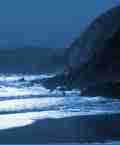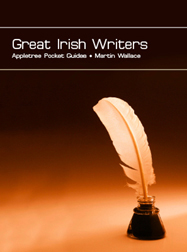 |
Search the site:

|
SEAMUS HEANEY 1939-
Heaney was born in Co. Londonderry on 13 April 1939. His father was a farmer and cattle-dealer, and Heaney was the eldest of nine children. He attended the nearby Anahorish School until he was twelve, when he went as a boarder to St Columb’s College in Londonderry. He then studied English Language and Literature at Queen’s University in Belfast, graduating with first class honours in 1961.
… In 1975 Heaney returned to the security of a salaried post, lecturing at Carysfort Training College in Dublin. He remained there until 1981, and made his home in the city. A new collection, Field Work, appeared in 1979. It contained an elegy for the late American poet, Robert Lowell, from whom Heaney had received the Duff Cooper award. Lowell had held a poetry workshop at Harvard University, and Heaney was offered the opportunity to teach there for part of the year. In 1984 he was elected to the Boylston Chair of Rhetoric and Oratory, letting him divide his time between Ireland and America. He remains a prolific writer. Later volumes of verse include Station Island (1984), The Haw Lantern (1987), Seeing Things (1991), and The Spirit Level (1996). There have been collections of Selected Poems (1980 and 1990) and Preoccupations: Selected Prose (1980). His translations have ranger from Sweeney Astray (1983), drawn from a medieval Irish poem, to The Cure at Troy (1990), from Sophocles’ play Philoctetes. He co-edited two verse anthologies with Ted Hughes, the British Poet Laureate. In 1989, Heaney was elected to a five-year term as Professor of Poetry at Oxford University. A coveted distinction, it proved a precursor to the award of the Nobel Prize for Literature in 1995. Heaney’s 1999 translation of the Anglo-Saxon epic Beowulf won him the Whitbread award. Lowell described Heaney as ‘the best Irish poet since W.B. Yeats’, though he has contributed fewer memorable lines to everyday conversation. A part of his popularity is a modest but persuasive manner, as effective in a poetry reading as in a television documentary. Of his Irishness there is no doubt. When he was included in an anthology of contemporary British poetry, he replied with An Open Letter (1983), a poem pointing out that ‘My passport’s green./No glass of ours was ever raised/To toast The Queen.’
Bellaghy Bawn in the town of Bellaghy, in Co. Londonderry has a permanent exhibition on the poetry of Seamus Heaney.
|
[ Back to Top ]
All Material © 1999-2005 Irelandseye.com and contributors

